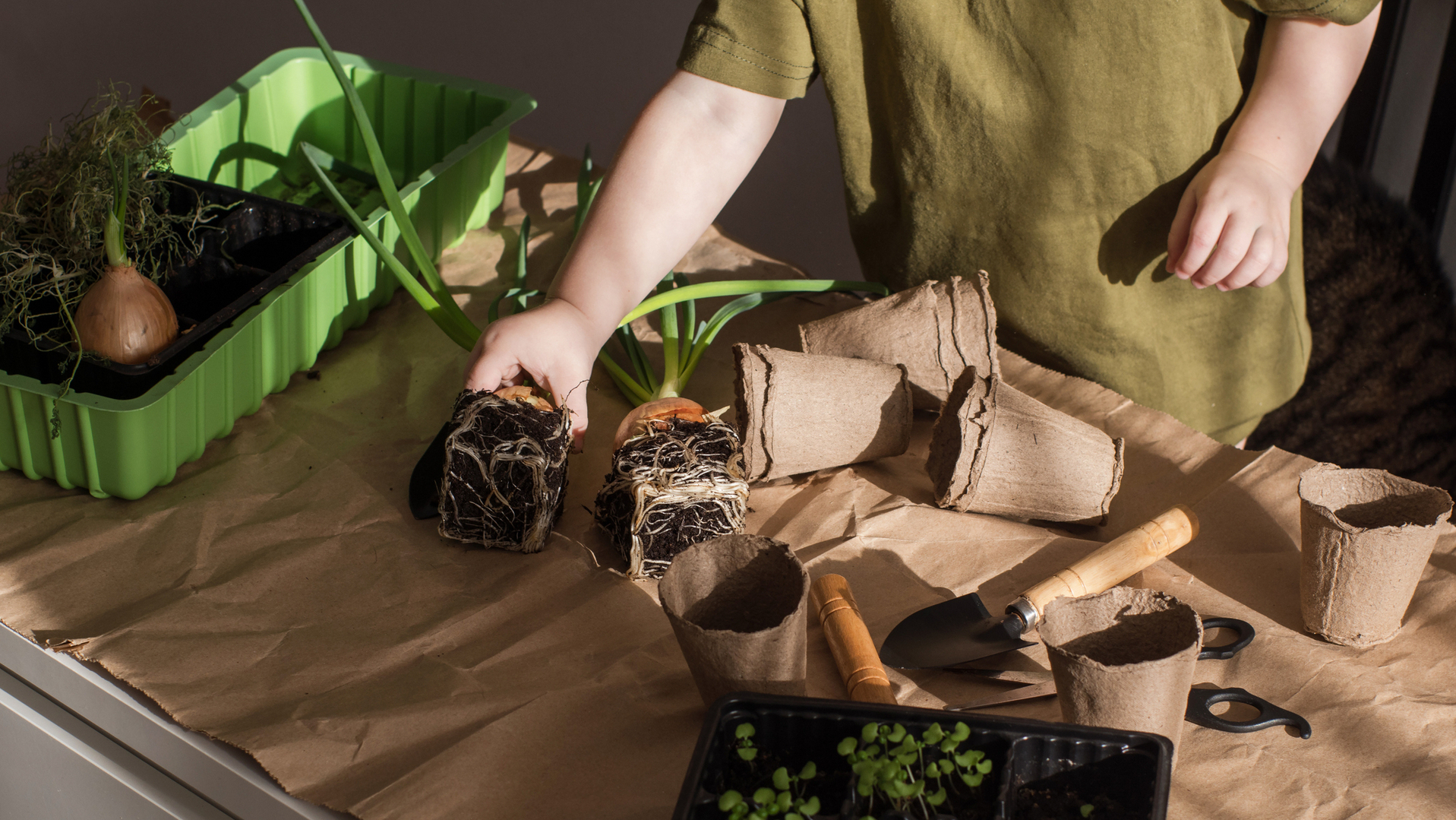Food Education Through Food Scraps
- Written by: Alexis Webster

Food scraps are the parts of food that tend to be uneaten and discarded, such as peels, stems, cores, roots, and perhaps food that simply went bad. Many of us are tempted to throw food scraps away but they actually are an underrated educational tool. Considering the rising cost of food and increasing threat of food scarcity it is important to teach young children about reducing food waste, utilizing what we already have, and how to be resourceful. Incorporating food scraps into your classroom activities is a great way to do this while providing a hands-on learning experience. Here are five ways you can teach young children about using food scraps:
1. Regrowing Food
Certain food scraps, such as onion bottoms, lettuce, and celery, can be regrown in water or in soil. Children can take turns watering and caring for the scraps, and watch as they grow into new plants. Learn more about how you can garden with young ones in this blog: Creating an Engaged Eating Environment: 7 Tips for Gardening with Young Children
2. Making Stock
Children can help to collect vegetable scraps and use them to make a flavourful broth or stock. Keep the scraps in a bag or container in the fridge until you have enough for a stock.
3. Cooking
Children can learn about nutrition, kitchen skills, and math concepts by using food scraps in cooking activities.1 For example, use broccoli stems in a stir fry, use overripe fruits to make a smoothie, or turn brown bananas into banana bread. An added bonus is that children are more likely to eat food they prepared themselves.2 For more information about the benefits of involving children in the kitchen check-out our blog: Cooking with Kids.
4. Food Waste Reduction
Children can learn about the importance of reducing food waste by planning meals, buying only what is needed, and storing food properly. Encourage them to think about how their actions can make a difference in the environment.
5. Composting
Food scraps take longer to decompose and emit more greenhouse gas in landfills than when they are composted.3 Throughout all four seasons, children can learn about the natural process of decomposition by helping to maintain a compost bin in the classroom or school garden. They can add food scraps and other organic materials (such as tissue and paper towels), and watch as the compost breaks down over time. Once the compost is ready, they can help to spread it in the garden. Learn more about maintaining your compost bin including what to avoid putting in there from the City of Edmonton composting website.
By involving young children in the use of food scraps, you are providing valuable education on sustainability, nutrition, and hands-on learning experiences.
It will also help them to develop a sense of responsibility for taking care of the environment and make them more conscious about food waste.
References
-
Kids Health. (2014, November). Cooking with preschoolers. Retrieved from https://kidshealth.org/en/parents/cooking-preschool.html
-
DeJesus, J. M., Gelman, S. A., Herold, I., & Lumeng, J. C. (2019). Children eat more food when they prepare it themselves. Appetite, 133, 305-312.
-
Lou, X. F., & Nair, J. (2009). The impact of landfilling and composting on greenhouse gas emissions - A review. Bioresource Technology, 100(16), 3792-3798.https://doi.org/10.1016/j.biortech.2008.12.006